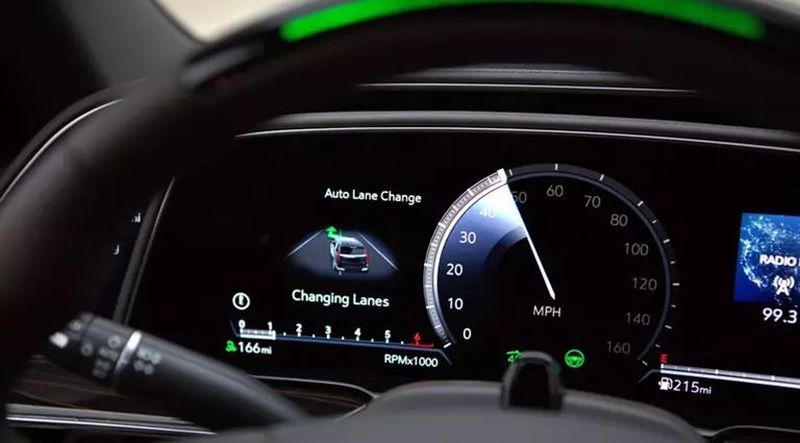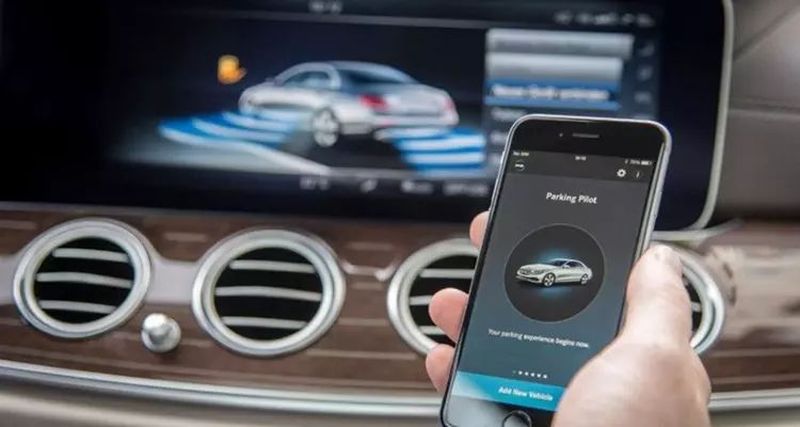In this article, we’ll tell you how does an automated driving system work. The world of mobility has been changing drastically in recent years. A clear example of this is what is known as the automatic driving system, a variable that several cars and brands already incorporate to make the task easier for the driver while behind the wheel. This type of technology works at its best for efficient driving in all senses.
Although cars are already born with state-of-the-art technologies, mechanics, and functions, whether in conventional cars or electric cars, the type of transportation referred to has been changing at forced speeds in a very advanced way. In this sense, and perhaps as one of the most important transformations and variations in vehicles, is automatic driving, not autonomous.
Differences between automatic and autonomous driving
When driving a car, we are faced with several functions that will make our driving vary or adapt at all times to what the car asks for or needs. One of them is the automatic driving function, also known as automated or automatic driving, for which there are several that implement them as standard. In many cases, such as BMW or Mercedes, the most frequent brands that carry it, they also do it because we can do it manually.
Now then: is it the same as the autonomous driving of, for example, Tesla? No, far from it. First of all, because the former has been evolving the technology in use for more than 30 years, with an effective and useful process to drive the car in a more accessible, feasible, and, for many, easier way. When it comes to autonomous driving there is a notable difference, perhaps the biggest: the first requires driver control, practically at all times. Regarding the latter, the intention is that it should only be seen as simple supervision of the driver.
As such, what we see in what has to do with Tesla’s autonomous driving is that this is a very advanced speed control assistant. They are very different terms in that one needs the driver and the other does not. Although autonomous driving has quite a few similarities with driver assistance systems, they do not ‘work’ in the same way. In the one that concerns us, they are seen with assistants such as the assisted parking system or emergency braking, where the driver must be present at all times.
How does an automated driving system work?
When we talk about autopilot or automatic driving, we are not referring to a device capable of driving the vehicle on its own. Rather, it is a complex system that involves the participation of sensors, cameras, or navigation systems, among others. These can be devices such as computers, software, and sophisticated levels of connectivity, among some of the most significant technologies in the field of automated driving.

These innovative technologies incorporated in the autopilot allow the car to identify and process information, whether it is pedestrians on the road, other vehicles, road markings, signage, etc., and generate a response accordingly. Its operation is linked to artificial intelligence systems, Big Data, and the commonly called Internet of Things.
Artificial Intelligence is very much attached to automatic driving, called to solve situations like this as we human drivers do. The same, and already taking positions in various devices, is present in today’s vehicles, especially in some driving aids, known as ADAS, and digital assistants.
The elements of automated driving
As we have mentioned, this software update does not make it an autonomous vehicle per se, although the improvements go in this direction. Even, in the next update of this type of AI that is already on its way, although it is still in the testing phase, it will allow leaving the car in a garage and have it park itself or come to pick us up at the entrance.
Of course, it will be a long time before we see this with our own eyes, but it is a step that will come from this type of automated driving. In this direction, technology and manufacturers have taken such attractive solutions that will make our driving as basic as possible thanks to a series of incorporations such as these.
- On-board computer: It is, perhaps, the best known and the closest in today’s vehicles. It is a computer that receives information from cameras and sensors, which we will also see below, and transforms this perception of the physical environment into digital data. It also has other advanced functions, such as deciding on the car’s displacement, braking, and speed.
- High-resolution sensors and cameras: Located on the roof and windshield, they capture the car’s environment, transmit it to the onboard computer and automatically generate a response through a network of electrical signals.
- Topographical vision: Based on vision tomography algorithms, they can process in real-time the information transmitted by the cameras and sensors during the car’s movement.
- 3D visualization: It recognizes the places where the vehicle travels in three-dimensional form, as well as stores and records this information.
Automated driving systems of brands
Mercedes Drive Pilot
Broadly speaking, these four elements mentioned above are the ones that are most present in cars for this type of automatic driving. But, at the same time, it is the manufacturers and brands themselves that customize their style with new techniques, each one more sophisticated than the last. One of the best-known cases is that of Mercedes and its Drive Pilot, a technology for its most updated cars.

Instead, this is a technologically advanced semi-autonomous driving assistant, created by Mercedes, which incorporates multiple functions and is capable of performing certain actions and maneuvers. All in all, it allows the driver to let the vehicle make certain decisions based on the information provided by these cameras, sensors, and radars. The assistance provided to the driver in a multitude of aspects significantly increases safety and comfort.
Among its most outstanding functions is its lane-keeping assistant. This is one of the most advanced on the market. It works very effectively on certain roads with optimal conditions, such as highways, and can assume some of the driver’s roles. It also incorporates adaptive cruise control, which is combined with an advanced signal recognition system, or automatic emergency braking. Together with the fully autonomous parking system, complete the performance of the assistant created by the German brand.
BMW Active Driving Assistant Plus
Mercedes has one of the most advanced systems in terms of automatic driving, but it is not the only one. Its main competitor is BMW and its Active Driving Assistant Plus. This is an assistant for the driver, which has become more intelligent over the years and models.
This system is incorporated in cars such as the X4, which includes different intelligent driver assistance systems, guaranteeing maximum comfort and safety at the wheel. This comprehensive safety package includes, among others, lane and steering control assistant, state-of-the-art active cruise control with Stop & Go function, road crossing warning systems, and a lane-keeping assistant with active side impact protection.
My Honda
Among the most advanced brands in terms of these systems in the form of driving assistants, Honda is one that we always have to keep in mind. Not only because it is a manufacturer that is a couple of steps ahead of the rest, but also because its performance is better than that of Mercedes or BMW.
And it is that this, as with the competition, allows greater interaction between the car and its owner and adds interesting features for safety, such as roadside assistance. This is a system similar to Opel’s OnStar but developed specifically for Honda vehicles.
In cases such as the Honda-e, the 100% electric car of the Japanese brand, they have an active driving assistant that automatically helps to keep the vehicle centered within a lane (if going at a speed of no more than 130 kilometers per hour) which prevents the driver from changing lanes if there is another car in his blind spot. Integrated with Honda Connect, it provides quick access to Internet-based services such as web navigation, news, traffic information, and real-time weather forecasts.





